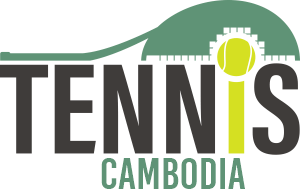Tennis is a physically demanding sport that can take a toll on the body, particularly the shoulder area. Tennis shoulder, also known as shoulder impingement syndrome, is a common injury among tennis players. Understanding the causes, symptoms, and treatment options for this condition is crucial for any tennis enthusiast looking to maintain optimal performance and avoid long-term complications.
Understanding Tennis Shoulder
What is Tennis Shoulder?
Tennis shoulder refers to a range of shoulder injuries that can occur due to the repetitive motions involved in playing tennis. These injuries often involve the rotator cuff, a group of muscles and tendons that stabilize the shoulder joint. The rotator cuff is responsible for absorbing significant force during tennis strokes, making it susceptible to overuse and strain.
Common Causes of Tennis Shoulder
Several factors can contribute to the development of tennis shoulder:
- Repetitive overhead motions, such as serving and smashing
- Poor technique or form during tennis strokes
- Muscle imbalances or weakness in the shoulder area
- Inadequate warm-up or stretching before playing
- Overtraining or sudden increases in training volume
Addressing these risk factors can help prevent or minimize the severity of shoulder injuries in tennis players.
Symptoms of Tennis Shoulder
Identifying Shoulder Pain
The primary symptom of tennis shoulder is pain in the shoulder area, particularly during or after playing tennis. The pain may be localized to a specific area or radiate down the arm. Players may experience a dull ache or sharp pain, especially when raising the arm overhead or reaching behind the back.
Other Symptoms to Watch For
In addition to pain, tennis players with shoulder injuries may notice:
- Weakness in the shoulder or arm
- Stiffness or reduced range of motion in the shoulder joint
- Swelling or tenderness in the affected area
- Clicking, popping, or grinding sensations during shoulder movements
If any of these symptoms persist or worsen over time, it is important to seek medical attention to prevent further damage.
Common Shoulder Injuries in Tennis Players
Shoulder Impingement Syndrome
Shoulder impingement syndrome occurs when the tendons of the rotator cuff become compressed or irritated as they pass through a narrow space in the shoulder. This can cause inflammation, pain, and weakness. Impingement is often linked to repetitive overhead movements and poor serving technique in tennis players.
Rotator Cuff Tear
A rotator cuff tear is a more serious injury that can result from acute trauma or chronic overuse. It involves a partial or complete tear in one or more of the rotator cuff tendons. Symptoms include severe pain, weakness, and limited range of motion. Surgery may be required for full-thickness tears.
Tendonitis
Tendonitis refers to inflammation of a tendon, which can occur in various parts of the shoulder. In tennis players, rotator cuff tendonitis and biceps tendonitis are common. Overuse, improper technique, and muscle imbalances can contribute to the development of tendonitis.
Bursitis
Bursitis is the inflammation of the bursa, a fluid-filled sac that reduces friction between tissues in the shoulder. Repetitive motions and direct trauma can irritate the bursa, leading to pain and swelling. Bursitis often occurs in conjunction with other shoulder injuries.
Dynamic Instability
Dynamic instability occurs when the shoulder joint becomes loose or unstable over time. This can result from repetitive activity, trauma, or poor posture. Players with dynamic instability may experience a sensation of the shoulder “giving way” during certain movements.
Effective Treatment Options for Tennis Shoulder
Non-Surgical Treatments
For mild to moderate cases of tennis shoulder, non-surgical treatments are often effective:
| Treatment | Description |
|---|---|
| Rest and Activity Modification | Taking a break from tennis and avoiding aggravating movements allows the shoulder to heal. |
| Ice and Heat Therapy | Applying ice helps reduce inflammation, while heat can alleviate stiffness and promote blood flow. |
| Physical Therapy | Strengthening exercises, stretches, and manual therapy techniques can improve shoulder function and stability. |
| Anti-Inflammatory Medications | Over-the-counter or prescription medications can help manage pain and inflammation. |
Early intervention and adherence to a comprehensive treatment plan are key to successful recovery.
Surgical Treatments
In severe cases or when conservative treatments fail, surgical intervention may be necessary. Common surgical procedures for tennis shoulder include:
- Arthroscopic surgery to repair torn tendons or remove damaged tissue
- Open surgery for more complex repairs or reconstructions
- Shoulder replacement for advanced arthritis or irreparable damage
The type of surgery depends on the specific injury and its severity. Recovery time varies but typically involves a period of immobilization followed by physical therapy.
Preventing Tennis Shoulder
Proper Technique and Training
Developing proper technique is essential for preventing shoulder injuries in tennis. Players should work with a qualified coach to learn correct form for serves, groundstrokes, and volleys. Gradually increasing training volume and intensity can help the body adapt to the demands of the sport.
Strengthening and Conditioning
A well-rounded strength and conditioning program can help prevent tennis shoulder by:
- Strengthening the rotator cuff and scapular stabilizers
- Improving flexibility and range of motion in the shoulders
- Enhancing core stability and overall body control
- Correcting muscle imbalances that may lead to injury
Incorporating exercises like rotator cuff strengthening, scapular retraction, and dynamic stretching can reduce the risk of shoulder problems.
Seeking Professional Help
When to See a Doctor
If shoulder pain persists for more than a few weeks or interferes with daily activities, it is important to consult a healthcare professional. Seeking early treatment can prevent minor issues from developing into more serious injuries. A sports medicine physician or orthopedic specialist can provide an accurate diagnosis and recommend an appropriate treatment plan.
Specialized Clinics and Services
Centers like the Fortius Clinic offer specialized care for sports injuries and shoulder conditions. The Shoulder Team at Fortius consists of expert surgeons who collaborate to provide comprehensive, patient-centered treatment. Services may include diagnostic imaging, physical therapy, surgical interventions, and post-operative rehabilitation.
By understanding the causes, symptoms, and treatment options for tennis shoulder, players can take proactive steps to prevent injuries and maintain optimal performance on the court. Seeking specialized care from experienced professionals is crucial for timely diagnosis and effective rehabilitation. With proper training, technique, and medical support, tennis enthusiasts can enjoy the sport while minimizing the risk of shoulder problems.






